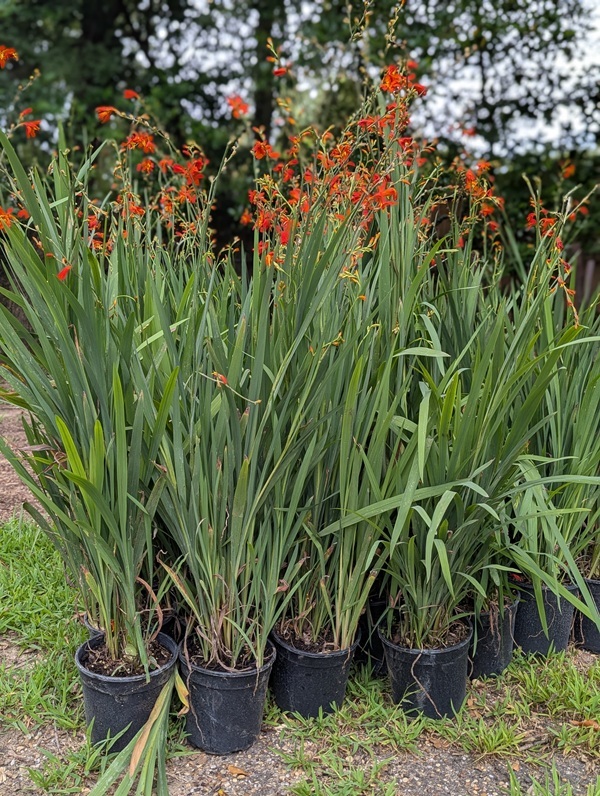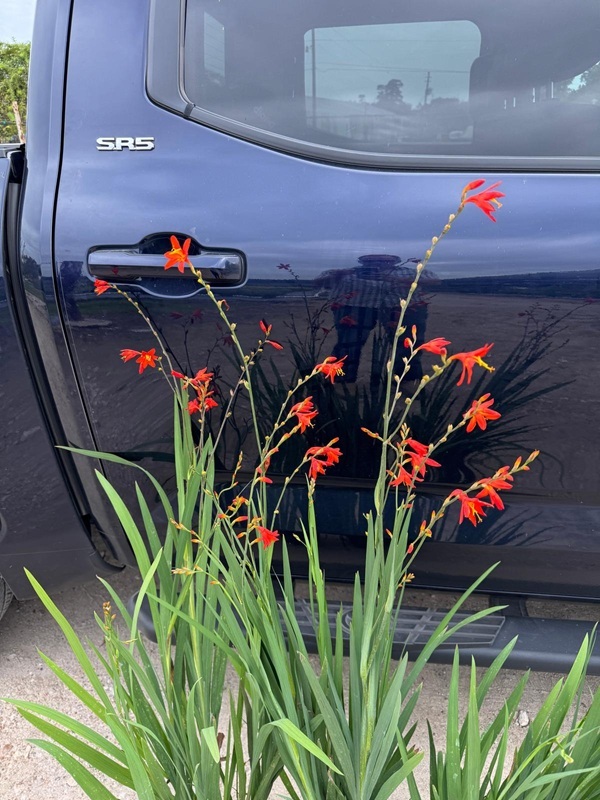

Blooms and Foliage: The sword-like foliage is a great addition to add texture to your summer garden as it stands about 3-4 feet tall. The eye-catching red-orange flowers appear around July - August and are 1-2" across and each stem has 20-30 blooms on it that each open in succession. This gives you flowers over several weeks during the hot summer.

Mulitplying: ‘Emily McKenzie’ Crocosmia multiplies naturally by forming offsets, or small corms, around the base of the original plant. Each year, the clump will grow a bit larger, producing more flowering stems and creating a fuller display. In just a few seasons, what began as a small planting can become a generous patch of vivid summer color. If the clump becomes too crowded or you want to spread the beauty around, you can lift and divide the corms in late fall or early spring—an easy way to multiply your plants and fill more garden spaces.
You can see from the pots above, which is what we are selling - 2025, that each pot contains multiple shoots and corms. You can go ahead and divide this when you plant it for crocosmia in multiple places.
Animals: Polinators, hummingbirds, bees, and butterflies, love crocosmia while deer and other animals tend to leave it alone. Deer, squirrels, rabbits tend to avoid crocosmia (though deer have been known to eat plastic flowers). It is not toxic to your pets who are rarely interested in it either.

Blooms and Foliage: The sword-like foliage is a great addition to add texture to your summer garden as it stands about 3-4 feet tall. The eye-catching red-orange flowers appear around July - August and are 1-2" across and each stem has 20-30 blooms on it that each open in succession. This gives you flowers over several weeks during the hot summer.

Mulitplying: ‘Emily McKenzie’ Crocosmia multiplies naturally by forming offsets, or small corms, around the base of the original plant. Each year, the clump will grow a bit larger, producing more flowering stems and creating a fuller display. In just a few seasons, what began as a small planting can become a generous patch of vivid summer color. If the clump becomes too crowded or you want to spread the beauty around, you can lift and divide the corms in late fall or early spring—an easy way to multiply your plants and fill more garden spaces.
You can see from the pots above, which is what we are selling - 2025, that each pot contains multiple shoots and corms. You can go ahead and divide this when you plant it for crocosmia in multiple places.
Animals: Polinators, hummingbirds, bees, and butterflies, love crocosmia while deer and other animals tend to leave it alone. Deer, squirrels, rabbits tend to avoid crocosmia (though deer have been known to eat plastic flowers). It is not toxic to your pets who are rarely interested in it either.
